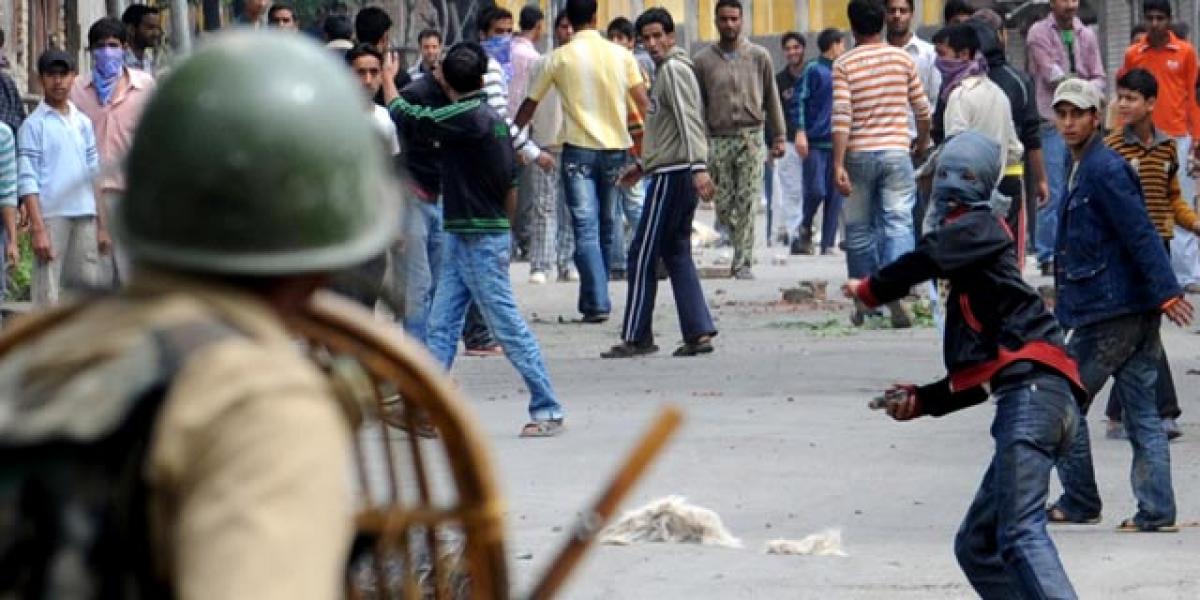Live
- Over 7,600 Syrians return from Turkiye in five days after Assad's downfall: minister
- Delhi BJP leaders stay overnight in 1,194 slum clusters
- Keerthy Suresh and Anthony Thattil Tie the Knot in a Christian Ceremony
- AAP, BJP making false promises to slum dwellers for votes: Delhi Congress
- 'Vere Level Office' Review: A Refreshing Take on Corporate Life with Humor and Heart
- Libya's oil company declares force majeure at key refinery following clashes
- Illegal Rohingyas: BJP seeks Assembly session to implement NRC in Delhi
- Philippines orders full evacuation amid possible volcanic re-eruption
- Government Prioritizes Welfare of the Poor, says Dola Sri Bala Veeranjaneyaswamy
- Two Russian oil tankers with 29 on board damaged due to bad weather
Just In

Earlier this week, when upper-caste villagers in the western Uttar Pradesh district of Firozabad tried to prevent the funeral of a Dalit paramilitary trooper killed in a terrorist ambush, it was the latest manifestation of widespread discrimination against 305 million Indians belonging to scheduled castes (SCs) and scheduled tribes (STs).
Earlier this week, when upper-caste villagers in the western Uttar Pradesh district of Firozabad tried to prevent the funeral of a Dalit paramilitary trooper killed in a terrorist ambush, it was the latest manifestation of widespread discrimination against 305 million Indians belonging to scheduled castes (SCs) and scheduled tribes (STs).
Upper-caste villagers refused to allow the funeral of Vir Singh, a Nat - a community of now-settled formerly nomadic acrobats who are Dalits, reluctantly relenting after many hours of cajoling by a local bureaucrat. A father of three, Singh, a 35- year veteran of the Central Reserve Police Force, died in Kashmir’s Pampore region on June 26. His family lived in a one-room home with a tin roof.
After 68 years of Independence, not only does discrimination endure against Indians from scheduled castes and scheduled tribes - 201 million and 104 million according to Census 2011 - crimes against India’s most marginalised are rising. Despite progress, Scheduled Castes and Scheduled Tribes-who together constitute 25.2 per cent of India’s population-continue to trail other Indians. To quantify the gap, IndiaSpend used four criteria: Education, income, land and home ownership and government jobs.
Every so often, even those Dalits who have broken through India’s logjam of caste find it difficult to navigate a society dominated by upper castes. Rohith Vemula, a 25-year- old University of Hyderabad Dalit PhD student - whose January 2016 suicide became a rallying point for those who felt discriminated.
Education
Both scheduled castes (SCs) and scheduled tribes (STs) lag Indian educational indicators, according to Census 2011: 66 per cent of SCs are literate, as are 59 per cent of STs; literacy among the general population is 74 percent. Reservations have helped improve enrolment rates in higher education, but many students feel the pressure of expectations and subtle discrimination.
Income
In 83 per cent of SC households and 86.5 per cent of ST homes, the monthly salary of the highest-earning member was less than Rs 5,000, according to data from 2011 Socio-Economic Caste Census (SECC).
SC and ST households constitute half of India’s “poor, deprived households”, according to this 2011 year pilot survey to identify how many Indians lived below the poverty line. That deprivation is evident in the homes and land that SCs and STs own.
ST land holdings are lowest in some relatively prosperous states, such as Goa, Gujarat and Telangana, where they constitute 13 per cent, 21 per cent and 11 per cent of the population. As for SCs, they own little or no land in Haryana and Chhattisgarh, where they constitute 23 per cent and 14 per cent of the population.
Government jobs
There is no data on how many SCs and STs are employed by the private sector, but an analysis of SC/ST representation in government services reveals that despite reservations - 15 per cent of such jobs are reserved for SCs and 7.5 per cent for STs - they lag other Indians.
No more than 0.48 percent of ST and 0.73 percent of SC households had a salaried government (both Centre and State) job, according to the SECC 2011. In 1994, the latest year for which such data is available, 16.9 percent of all Central government employees were SC and 5.49 percent were ST - their proportion in the general population.
Do job reservations help
There is evidence of some positive impact and no negative impact, according to a 2016 productivity study of the Indian Railways - India’s largest public-sector employer using data from 1980 and 2002 by two researchers, Ashwini Deshpande from the Delhi School of Economics and Thomas Weisskopf of the University of Michigan.
As for self-employed SCs and STs, their businesses fared “significantly worse” than those owned by upper castes, with 55 percent of the earnings gap unexplained, implying “greater discrimination”, said another 2015 study by Deshpande. (In arrangement with IndiaSpend.org).
By Himadri Ghosh

© 2024 Hyderabad Media House Limited/The Hans India. All rights reserved. Powered by hocalwire.com







